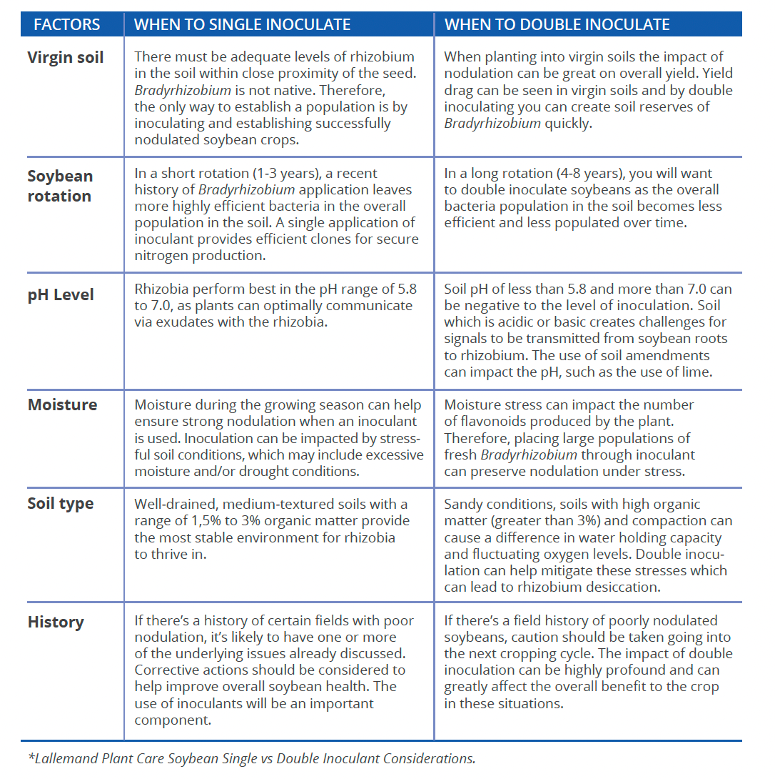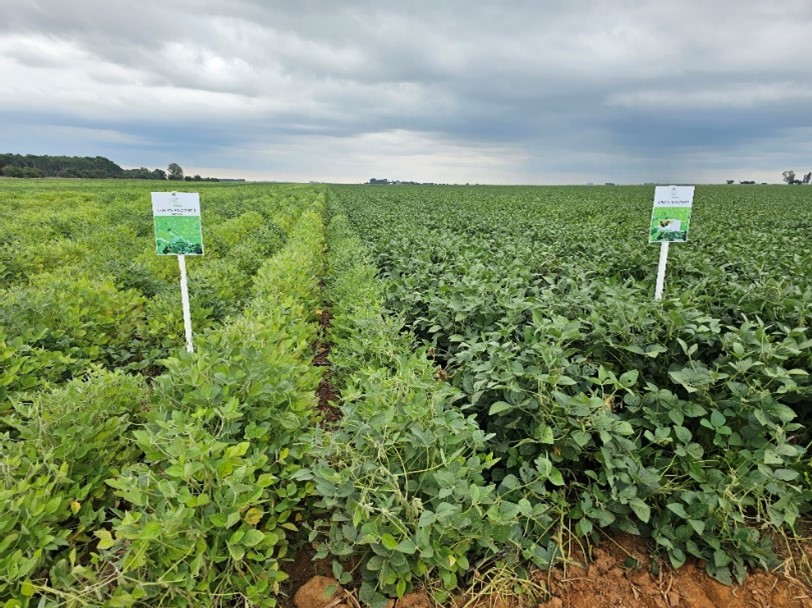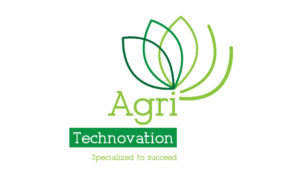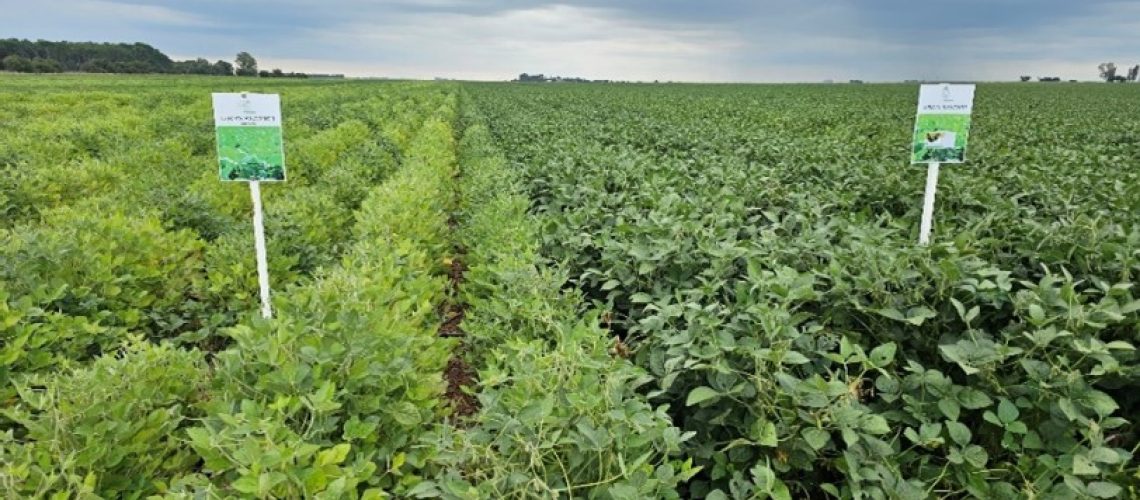by Neil Smit, Senior Agronomist, and Stefan van Wyk, Head of Biological Research and Product Development, Victus
The need for nitrogen
Nitrogen is an essential macronutrient required for the growth and development of plants. All vital processes in plants need nitrogen as a main building block in proteins and enzymes. It can therefore be said that the availability of nitrogen ultimately also impacts crop productivity. However, as a sought-after nutrient, nitrogen fertiliser is not only costly, but excessive nitrogen use could damage the environment. Therefore, by reducing the dependence on nitrogen fertilisation in agriculture, several economic and environmental benefits can be achieved.
Legumes getting their nitrogen fix
Legumes have evolved the ability to fix atmospheric nitrogen through the symbiotic relationship they form with (nitrogen-fixing) specialised soil bacteria called rhizobia. During the symbiotic interaction, specific communication- signalling molecules are produced by both the bacteria and the plant, which leads to the formation of a highly specialised plant root structure, namely nodules. This process of biological nitrogen fixation is carried out by a specialised group of prokaryotes.
These organisms utilise the enzyme nitrogenase to catalyse the conversion of atmospheric nitrogen (N2) to ammonia (NH3) and is an environmentally friendly solution to address nitrogen deficiency and increase crop productivity. Under favourable conditions and limited soil nitrogen, hundreds of nodules can be formed on the root system to supply the host legume plant with sufficient nitrogen.
This symbiotic interaction, however, is very host-specific, as there are only a limited number of host plant species with which each rhizobium strain can engage in a symbiotic interaction. To ensure good biological nitrogen it is imperative to use the correct rhizobium bacteria strain (the one which is specific to the legume crop it is intended for) before the seed is planted.
To enable the full potential of bacterial inoculants, an inoculant must:
- Be the correct strain of rhizobium for the specific legume crop;
- Contain a high concentration of rhizobium bacteria;
- Have a long shelf-life;
- Be free from undesired contamination;
- Be appropriately packaged and stored until use; and
- Be able to survive adverse conditions (Table 1).
 Several factors can affect the survival and therefore the effectiveness of rhizobium inoculants, depending on the application method (Table 2).
Several factors can affect the survival and therefore the effectiveness of rhizobium inoculants, depending on the application method (Table 2).

Rhizobia are living organisms with simple needs to grow and survive. Once incorporated into the soil, conditions such as soil pH, temperature and salinity have a great influence on the survival of rhizobium (Table 3).

Inoculation method for soybeans: Single vs double inoculation
Single inoculation could be adequate but sometimes double inoculation will be essential.
Double inoculation is the act of using a double application of a rhizobia inoculant. By using this method, producers will be able to establish high populations of rhizobia bacteria very quickly in the soil. With reference to specific factors, Table 4 summarises critical considerations when single inoculation would be adequate or when double inoculation would be essential.

Table 4: Factors to consider when planting soybeans and deciding on the method of inoculation.*

RhizoMAX: a bacterial legume inoculant for effective nitrogen fixation
Agri Technovation offers a range of biotechnologically advanced inoculants for legumes, namely RhizoMAX Lucerne™, RhizoMAX Nut and Bean™, RhizoMAX Pea™, RhizoMAX Phaseolus™ and RhizoMAX Soybean™, amongst others. These products are all manufactured in South Africa and therefore readily available fresh from the production line.

Figure 1: Plants inoculated using farmers’ standard practices on the left and plants inoculated with RhizoMAX Soybean™ Ultra on the right.
To illustrate the use of these products, one product range, RhizoMAX Soybean™, is highlighted as an example. RhizoMAX Soybean™ contains Bradyrhizobium japonicum strain WB74, which is specific for soybean crops.
The RhizoMAX Soybean™ range of products includes:
RhizoMAX Soybean™ Standard, RhizoMAX Soybean™ Macro, RhizoMAX Soybean™ Protect, RhizoMAX Soybean™ Ultra.
Apart from the standard option, all packaged variants are supplied with a drying powder, to hasten the drying period between the application of inoculant and planting.
Visible difference made
The greater number of viable rhizobium bacteria delivered with the seed and established with the plant, enables a greater rate of biological nitrogen fixation. Biological nitrogen fixation further promotes resistance of plants against diseases, plants are more tolerant against stressful conditions, seed germination is stimulated and ultimately improves crop yields.

Figures 2: Differences observed in the field of the same trial location. Plants inoculated using farmers’ standard practices on the left (leaves, roots, appearance) and plants inoculated with RhizoMAX Soybean™ Ultra on the right (leaves, roots, appearance).
Reg numbers: RhizoMAX LucerneTM: L10790, RhizoMAX Nut and BeanTM: L11656, RhizoMAX PeaTM: L10867, RhizoMAX PhaseolusTM: L11657, RhizoMAX SoybeanTM:L10868, SoybeanTM Macro: L10868, SoybeanTM Protect: L10868, SoybeanTM Ultra: L10868, OsmoGaurd: L11024, RhizoGuardTM: M98, SoluPHOSTM: M99.





